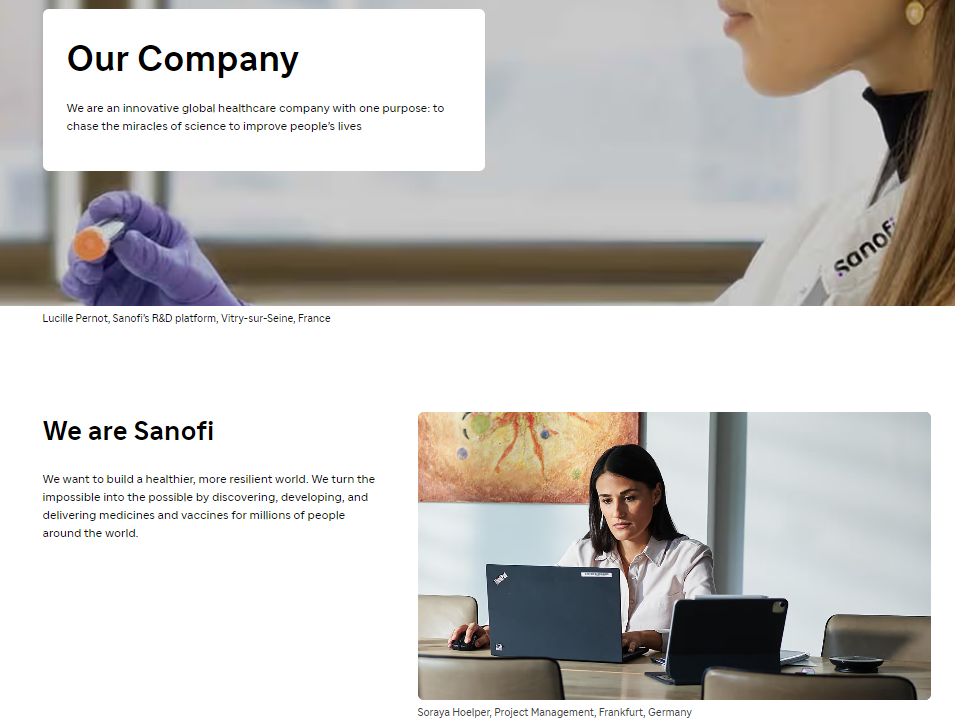Table of Contents
ToggleA Brief History of Sanofi
Sanofi is a global pharmaceutical company that was founded in 1973 through the merger of French companies Société d’antibiotiques and Laboratoires Robert & Carrière. Since its founding, Sanofi has grown to become one of the largest pharmaceutical companies in the world, with a focus on research, development, manufacturing, and marketing of pharmaceutical products.
Throughout its history, Sanofi has engaged in numerous mergers and acquisitions to expand its product portfolio and global reach. In 2004, the company merged with Aventis, another leading pharmaceutical company, to form Sanofi-Aventis. This merger further solidified Sanofi’s position as a major player in the pharmaceutical industry.
Sanofi has a long history of innovation and has developed a wide range of medical treatments and products across various therapeutic areas, including diabetes, cardiovascular diseases, vaccines, and oncology. The company continues to invest heavily in research and development to bring new and improved treatments to market.
Today, Sanofi operates in over 170 countries and employs tens of thousands of people worldwide. The company remains committed to its mission of improving patient health and quality of life through research, development, and the production of high-quality pharmaceutical products.
Who Owns Sanofi?
Sanofi is a multinational pharmaceutical company headquartered in Paris, France. The company is publicly traded on the stock exchange, meaning that its ownership is distributed among various shareholders. The top 10 shareholders of Sanofi as of 2021 are as follows:
1. L’Oreal
2. BlackRock
3. The Vanguard Group
4. Norges Bank Investment Management
5. Capital Research & Management Co.
6. Amundi Asset Management
7. Government of Singapore Investment Corp.
8. Wellington Management Co.
9. Massachusetts Financial Services Co.
10. Lyxor International Asset Management
These shareholders collectively own a significant portion of the company and have a stake in its performance and decisions.
Sanofi Mission Statement

Sanofi’s mission is to provide innovative healthcare solutions to improve the lives of people around the world. They are committed to developing and delivering high-quality, affordable medications and vaccines, while also focusing on preventive healthcare and addressing the unmet medical needs of patients. With a dedication to scientific research and ethical business practices, Sanofi strives to be a trusted partner in healthcare, advancing its mission to help people live healthier, longer, and more fulfilling lives.
How Sanofi Makes Money?
Sanofi’s business model is focused on the development, production, and sale of pharmaceutical products and healthcare solutions. The company generates revenue through the sale of prescription medications, over-the-counter drugs, vaccines, and other healthcare products. In addition to its core pharmaceutical business, Sanofi also generates revenue from partnerships, collaborations, and licensing agreements with other healthcare companies and organizations. The company’s diverse portfolio of products and solutions allows it to generate revenue from various sources, including direct sales to healthcare providers, wholesalers, and retail pharmacies. Overall, Sanofi’s revenue stream is built on its ability to innovate and deliver high-quality healthcare products to patients and healthcare professionals around the world.
Sanofi Business Model Canvas
The Business Model Canvas is a strategic management tool that provides a visual representation of a company’s business model. It outlines the key aspects of a business, including its customer segments, value propositions, channels, customer relationships, revenue streams, key resources, key activities, key partners, and cost structure. It helps businesses to analyze and organize these aspects in order to develop a clear and focused strategy.
Customer Segments:
1. Patients with chronic and rare diseases
2. Healthcare professionals
3. Distributors and wholesalers
4. Governments and healthcare institutions
5. Insurance companies
Value Propositions:
1. Innovative pharmaceutical products and solutions
2. Access to healthcare services and support programs
3. Research and development capabilities
4. Regulatory and quality compliance
5. Global supply chain and distribution network
Channels:
1. Direct sales force
2. Online platforms and e-commerce
3. Healthcare professional networks
4. Partner pharmacies and healthcare facilities
5. Marketing and advertising campaigns
Customer Relationships:
1. Personalized healthcare consultations and support
2. Disease management programs
3. Customer service and helpline
4. Training and education for healthcare professionals
5. Collaboration and engagement with patient communities
Revenue Streams:
1. Sales of pharmaceutical products and treatments
2. Licensing and partnerships
3. Research and development grants
4. Healthcare services and support programs
5. Market access and pricing strategies
Key Resources:
1. Research and development facilities and capabilities
2. Intellectual property and patents
3. Production and manufacturing infrastructure
4. Global supply chain and distribution network
5. Talent and expertise in pharmaceutical and healthcare industry
Key Activities:
1. Research and development of new drugs and treatments
2. Regulatory compliance and quality control
3. Production and manufacturing of pharmaceutical products
4. Sales and marketing strategies
5. Collaboration and partnerships with healthcare professionals and institutions
Key Partners:
1. Research institutions and academia
2. Contract manufacturing organizations (CMOs)
3. Distributors and wholesalers
4. Healthcare professional associations
5. Patient advocacy groups and communities
Cost Structure:
1. Research and development expenses
2. Manufacturing and production costs
3. Marketing and sales expenses
4. Regulatory and compliance costs
5. Distribution and logistics expenses
Sanofi’s Competitors
Sanofi, a global pharmaceutical company, faces competition from several top players in the pharmaceutical industry. Some of Sanofi’s top competitors include:
1. Pfizer
2. Novartis
3. Roche
4. Merck & Co.
5. GlaxoSmithKline
These companies are also global leaders in the pharmaceutical industry and compete with Sanofi in areas such as research and development, drug manufacturing, and sales and marketing. They also offer a wide range of pharmaceutical products and have a strong presence in different regions around the world.
Sanofi SWOT Analysis
Strengths:
1. Strong presence in the pharmaceutical industry with a diverse portfolio of products
2. Research and development capabilities driving innovation in healthcare
3. Global reach and market leadership in multiple therapeutic areas
4. Strong financial performance and steady revenue growth
Weaknesses:
1. Dependence on a few key products for a significant portion of revenue
2. High competition in the pharmaceutical market leading to pricing pressures
3. Limited presence in certain emerging markets
Opportunities:
1. Expansion into new markets and therapeutic areas
2. Growth potential in the biotechnology sector
3. Increasing demand for personalized medicine and digital health solutions
Threats:
1. Regulatory changes and approval challenges in the pharmaceutical industry
2. Intense competition and patent expirations
3. Economic instability and healthcare reform efforts in various countries
Concluding Analysis
In conclusion, it’s clear that Sanofi has positioned itself as a leader in the pharmaceutical industry with its diverse business model. The company’s focus on innovation, research and development, strategic partnerships, and a strong presence in emerging markets all contribute to its overall success. As an analyst, I am optimistic about the future of Sanofi. I believe that its commitment to furthering healthcare solutions, combined with its adaptability and resilience, will help the company continue to thrive in an ever-evolving industry. With a steadfast dedication to improving patient outcomes and addressing global health challenges, Sanofi is well-positioned for continued growth and success in the years to come.
Additional Resources
To keep learning and advancing your career, we highly recommend these additional resources:
Business Model Canvas of The Top 1,000 Largest Companies by Market Cap in 2024
A List of 1000 Venture Capital Firms & Investors with LinkedIn Profiles
Peter Thiel and the 16 Unicorns: The Legacy of Thiel Fellowship












